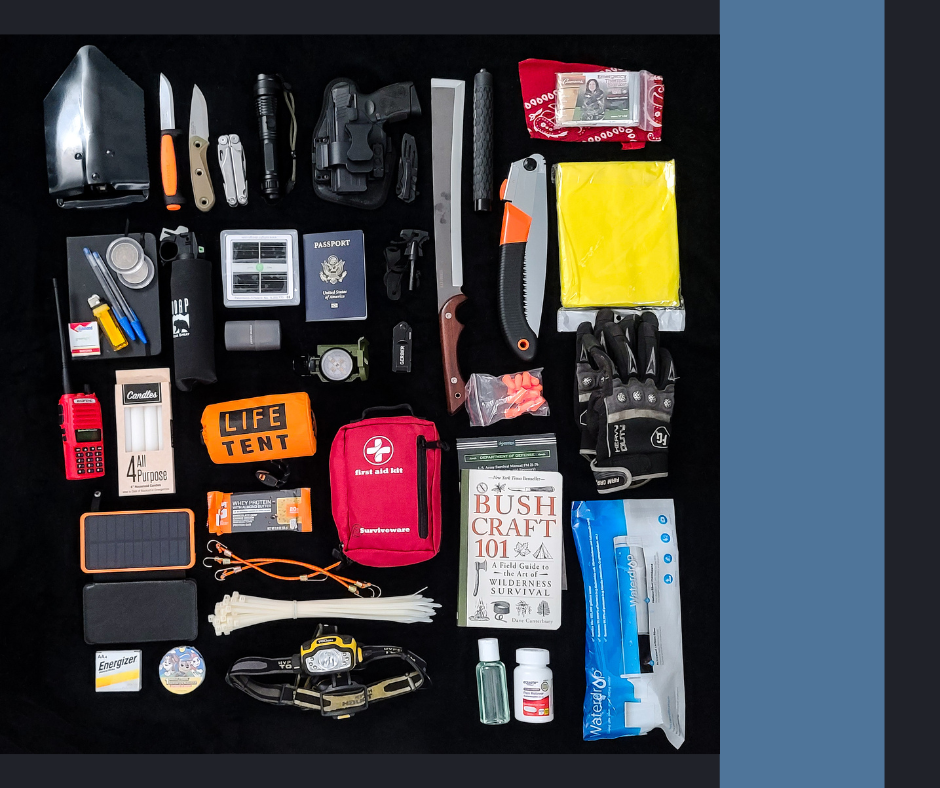
10 Common Mistakes People Make When Building an Emergency Kit
Share
Building an emergency kit is one of the most important steps you can take to protect yourself and your loved ones during a disaster. But even the most well-intentioned preppers can make mistakes that leave them vulnerable when it matters most. To help you out, here are 10 common mistakes to avoid when building your emergency kit.
1. Not Customizing for Your Family’s Needs
A generic list is a great starting point, but your kit should reflect your household’s specific needs. Do you have young children? Pets? Seniors? Allergies or medical conditions? Customize accordingly, including medications, comfort items, and food that works for everyone.
2. Forgetting Water (or Not Storing Enough)
Water is essential, yet many kits are light on it—or leave it out entirely. Aim for at least one gallon per person per day for at least three days. Don’t forget water for pets and sanitation, too.
3. Relying Only on Food That Requires Cooking
If your kit is packed with rice, pasta, and canned soups that need heating, you’re in trouble if the power goes out. Include ready-to-eat options like protein bars, peanut butter, and canned meats with pop tops.
4. Skipping a Way to Cook or Boil Water
On the flip side, if you do plan to cook or purify water, don’t forget a way to do it. Whether it’s a portable stove, fuel tablets, or a fire-starting kit, make sure you have safe options to heat food and water.
5. Not Including a Manual Can Opener
It’s a small, easy-to-miss detail—but a crucial one. If you pack canned goods without a manual can opener, you may end up with food you can’t access.
6. Forgetting Important Documents
In an emergency, you may need identification, insurance policies, or medical records. Store photocopies in a waterproof bag or on a flash drive (encrypted if possible) as part of your kit.
7. Ignoring Sanitation Needs
Toilet paper, wet wipes, feminine hygiene products, hand sanitizer, and trash bags often get overlooked. But sanitation becomes vital in any long-term emergency to stay healthy and comfortable.
8. Using Batteries but Not Packing Extras
Flashlights, radios, and other devices need batteries—but spares are often missing from emergency kits. Include extra batteries or invest in solar-powered or hand-crank alternatives. If you have battery powered devices in your kit, be sure to store them in your kit without the batteries in them so that the batteries don’t corrode inside the device and render it useless.
9. Never Updating the Kit
Out-of-date food, expired medications, and dead batteries can all make your kit ineffective. Schedule a check every six months to rotate food, replace batteries, and update seasonal gear and clothing sizes.
10. Building a Kit and Then Hiding It Away
An emergency kit isn’t helpful if no one knows where it is or how to use it. Keep it in an accessible location and make sure everyone in your household knows what’s inside, where it’s kept, and how to use key items.
Final Thought
Preparedness isn’t about fear—it’s about confidence. Avoiding these common mistakes can turn your emergency kit from a box of random supplies into a reliable, life-saving tool. Ready & Prepped is here to help you build a kit that works when you need it most.
No fuss. No fluff. No fear.
Need a checklist to get you started? Check out our FREE Emergency Kit checklist. To learn in greater detail about creating an emergency kit check out this article.
Other Articles of Interest
Emergency Water Storage Mistakes to Avoid
How Much Food and Water Do You Need For A Year
How to Build an Emergency Fund: A Step by Step Guide
Why Preppers Fail (And How to Make Sure You Don't)
